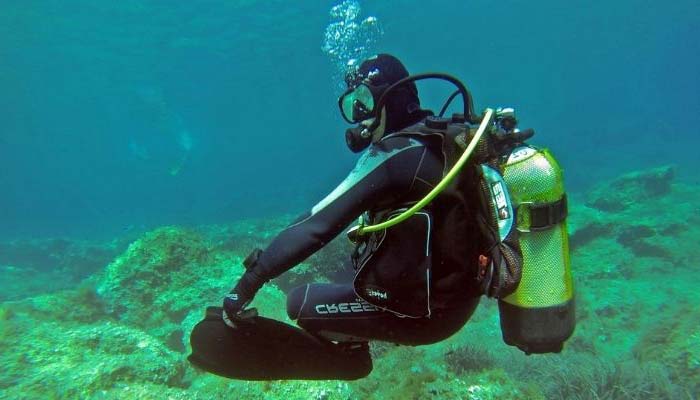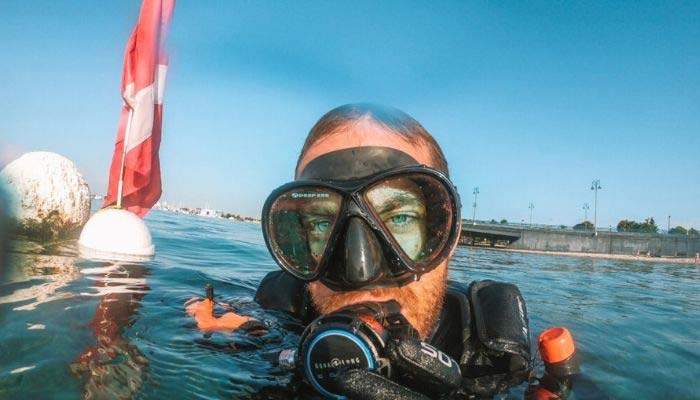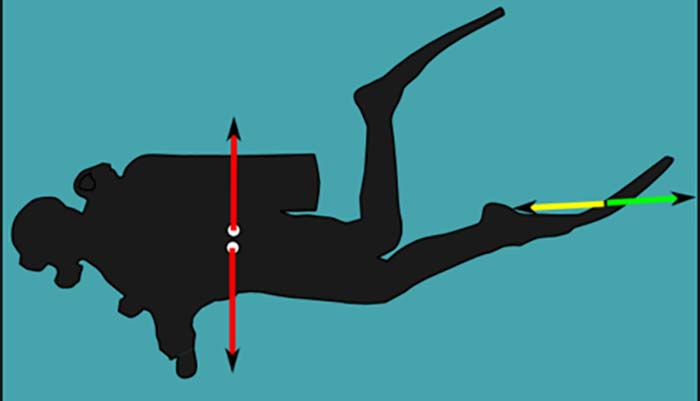How to Calculate Weight of Leads for Diving

Diving in Lanzarote is the best activity to get to know the wonders of the marine world, but at the same time it requires carefully selected equipment.
In this regard, calculating the kilos of lead for diving is essential.
This will allow us to dive safely to the depth we want to dive to, and it is best to make this calculation on every dive.
In this way, the increase or decrease of our body weight will not affect the experience at all.
And yes, considering aspects such as our weight, the tank, the suit and the environment where we are about to dive is absolutely necessary in this case.
To find out how each of these factors are involved, we have made a post in which we explain in detail how you should calculate the kilos of weights for diving.
We tell you what we recommend from Titan Blue Divers so that you can enjoy your next dive to the maximum!

Factors to consider when calculating weights of weights for diving
There are several key points that will allow us to know exactly how much lead we will need for each dive.
Both the environment and the diving equipment will be decisive in this respect, but how do they influence it? How do you calculate on the basis of these factors?
We'll tell you all this and more in a moment:
1º Initial calculation a Priori:
First of all, keep in mind that the amount of lead used is not fixed. Remember that throughout our lives we experience changes in muscle mass, body fat and physical condition, and, logically, all this has an influence.
The initial calculation will be a preliminary formula and the basis for the rest of the calculations.
To start with, it is best to use a weight equivalent to 10% of your body weight. This is a good starting point if, for example, you are using a 6mm full wetsuit.
In the case of a 3mm wetsuit, it is often advisable to carry 5% of your body weight. These percentages should always be taken as starting points only.
Another variable will be your height, although for your buoyancy check, you can use the formula above.
In this way you can progressively adjust the weight until you reach the most suitable weight for you.
Keep in mind that the result will vary as your build changes.
2º Freshwater or saltwater?
In this case we will deal with the details concerning the diving environment, as the weight we carry will also depend on whether we will be diving in fresh or salt water.
For example, if we practice this activity in fresh water, it is recommended to subtract 2 kilos of weight, because in this case there is a lower density.
Therefore, in such an environment we will sink more easily.
In the case of salt water, we must take into account that the level of salinity is different in each marine environment.
Let's explain it better. If, for example, you plan to dive in the Mar Menor (which has avery high level of saltiness) it is quite likely that you will need to add 2kg more lead to your initial formula.
On the other hand, if you dive in the Atlantic, you might be able to take off an extra kilo compared to the Mediterranean Sea.
3º Will you use aluminium or steel tanks?
Before we dive deeper, please note that diving with an aluminium tank will require more weight, as opposed to diving with a steel tank.
However, another point to consider with the aluminium tank is that it weighs slightly more than the steel tank when full. Another point to consider with the aluminium tank is that it weighs a little more than the steel tank when it is still full.
Therefore, as it empties, it will reach positive buoyancy levels due to its increased volume.
In this sense, to compensate and not be forced to make the stop by flapping upside down, if we use an aluminium bottle we will have to add 2 kilos more than with a steel one.
4º Volume of the bottle
This point is closely related to the previous one, and we must always bear in mind that it is not the same to use a 12l bottle as a 15l or 18l bottle.
In other words, the bigger the tank, the heavier it will be at the time of the dive. In other words, the more kilos of lead we can take off to start diving.
However, in this situation we must take into consideration that at the end of the dive (and the tank is empty), the more volume our tank has, the more positive buoyancy becomes.
To balance this effect, it may be necessary to add an additional kilo of lead to our initial formula.
5º Type of wetsuits
A very important thing to keep in mind about neoprene is that it is one of the most positively buoyant items of diving equipment.
In other words, as the thickness of our wetsuit increases, the buoyancy increases at the same time. As for the amount of lead we should carry, in this case the calculation is quite simple.
In this regard, for every 2 mm of neoprene you add to the suit, you must also add 2 kg of lead. That is to say, if with a 5mm we carry 6kg, with a 7mm we will carry

So, how many kilos of weights would you need to dive?
Taking all the examples and formulas we have reviewed above as a reference, let's make a preliminary calculation.
For example, let's start by assuming we have a base weight of 6kg, in salt water, using a 12l steel tank and a 5mm neoprene.
However, one day we decided to venture into freshwater diving(so we subtracted 2kg); using a 15l tank(we subtracted 2kg more) and opted to use a 7mm neoprene(in this case we added 2kg for an increase in thickness).
In short, we would need to subtract about 2kg(-2kg, -2kg +2kg), so we could make our dive with about 4kg of lead.
Always remember that all these figures are approximate. That is, it is possible that the 2kg change between adjustments may only be 1.5kg if you are small, or instead become 2.5kg if you are taller.
Therefore, only use these figures as a guideline when calculating the weight a priori.

Final Tip for your first Dive
If you have not dived for some time(or if it will be your first dive) it is normal that it will be a little more difficult to descend.
Therefore, if in doubt, it is better to take 1kg more than less.
However, remember that it is always best to consult with professional instructors to find the most suitable weight for you.
Don't forget to load dive weights safely.
More than knowing how much lead we should carry in each situation, it is essential to ensure our safety by moving that weight in the most appropriate way.
In this case, there are multiple alternatives, although the belt is the most common method of carrying our ballast.
We can use anything from belts that accept sliding weights to belts with pouches that can be adapted to solid or soft weights.
These accessories usually have a quick release point for emergencies.
Sometimes a back harness is even integrated for times when the buoyancy of the suit requires an additional amount of lead than can be comfortably worn around the waist.
Both integrated pockets and harness systems are very advantageous as they offer greater versatility, comfort and the ability to establish a final fit.
Unlike belts that have a single release point, with harnesses and integrated systems we can even have more than one quick release point in an emergency.
Now that we have fully reviewed all the factors to consider when calculating the kilos of lead for your next dive, we can make the following calculations
Have you managed to clear up all your doubts and do you think we have forgotten anything?
Remember that you can share your experience with us and ask any questions you may have in our comments. We are ready to answer your questions!


Un comentario
Me han encantado vuestras explicaciones y han dado luz a una serie de dudas que tenía. Muchas gracias!